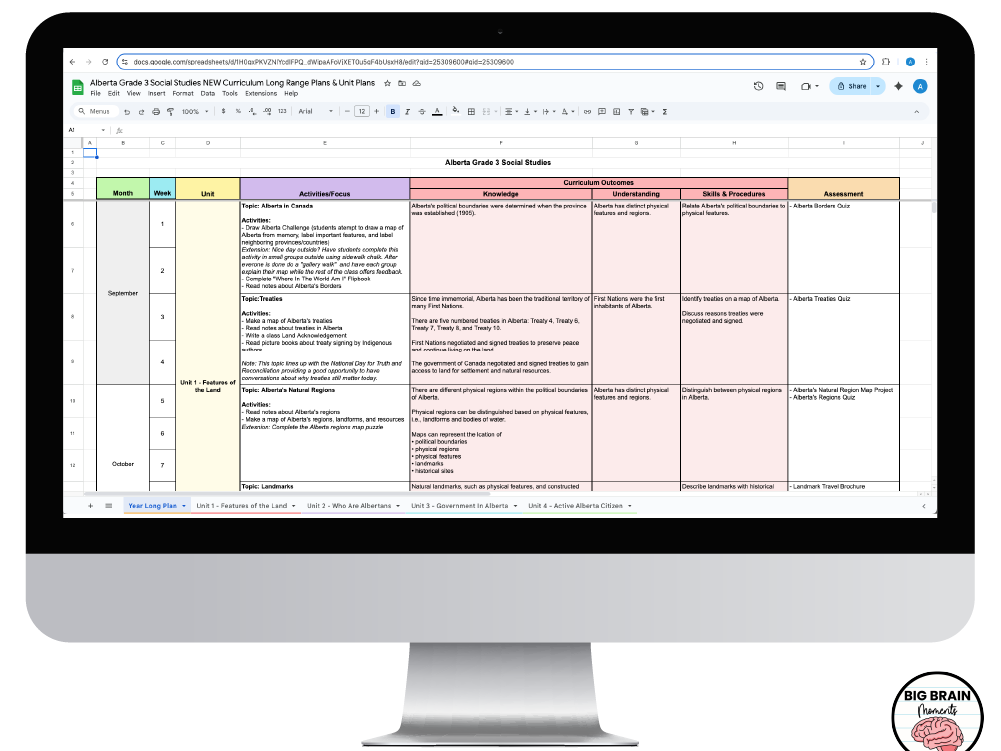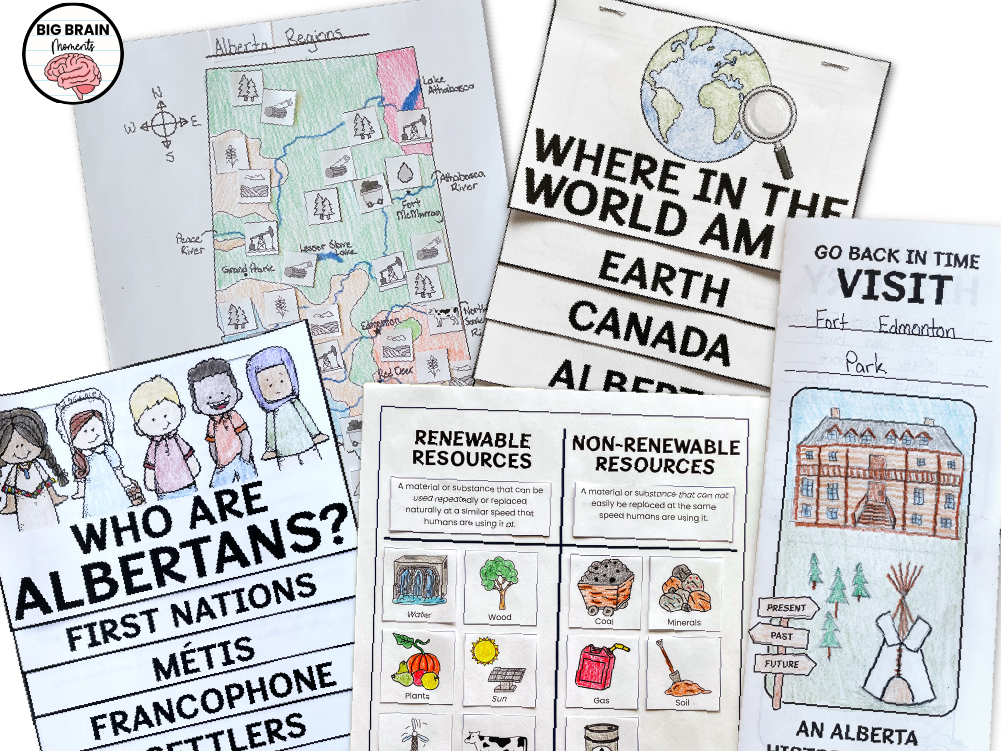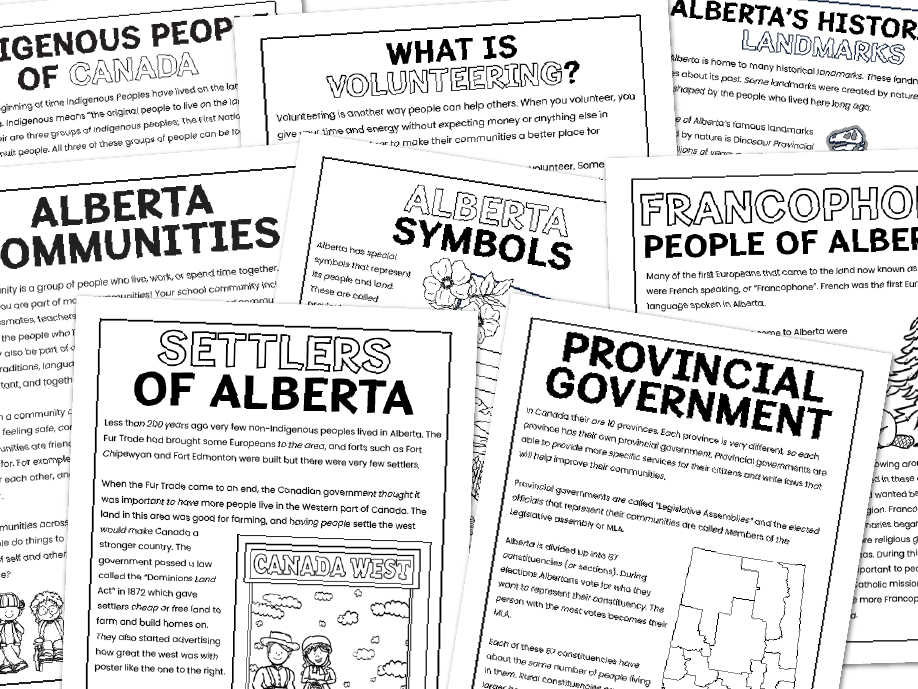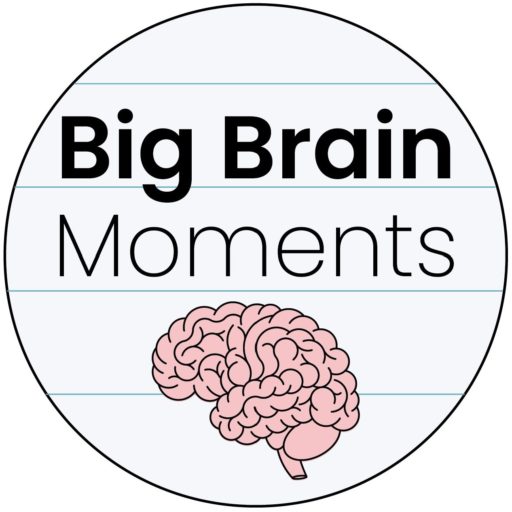The NEW Grade 3 Alberta Social Studies curriculum is full of exciting opportunities for students to learn about Alberta’s land, people, and communities. But with new outcomes and a wide variety of topics, many teachers are wondering: Where do I start? How do I fit it all in?
The good news is that with the right plan, you can break the curriculum into manageable pieces, keep students engaged, and feel confident in your teaching. Let’s walk through the four main units, explore common challenges, and share strategies to make Social Studies meaningful for your students.
Short on time and just want the resources? You can find everything I use to teach the New Grade 3 Social Studies Curriculum here!
What’s in the NEW Alberta Social Studies Curriculum?
All grades of the new social studies curriculum have objectives organized into three organizing ideas: time and place, systems, and citizenship. Personally I found the time and place organizing idea of the grade 3 curriculum to be quite large so I split it up. I decided to organize my year into four big units:
Unit 1: Features of the Land
Students learn about Alberta’s political boundaries, natural regions, and important landmarks. This is also where they begin recognizing treaties and Indigenous connections to the land.
Unit 2: Who Are Albertans?
Students explore Alberta’s diverse cultures, including First Nations, Métis, Francophone communities, early settlers, and more recent immigrants. They learn how traditions, languages, and stories shape our shared identity.
Unit 3: Government in Alberta
Students dive into how municipal and provincial governments work, Alberta’s symbols and services, and how natural resources are managed.
Unit 4: Active Alberta Citizen
Students practice citizenship by learning about charity, volunteering, and community involvement. This is where they connect classroom learning to real-world action.
Common Challenges Teachers Face
Teaching a new curriculum is hard. Even with a good structure there are going to be challenges. These are some me and my colleagues have faced:
- Pacing the content — each unit is rich with concepts and outcomes.
- Making complex topics accessible — treaties, government, and resource management can feel abstract for 8- and 9-year-olds.
- Finding aligned resources — not all schools provide updated materials for the new curriculum.
Tips for Teaching With Confidence
Have a Clear Plan
Start the year with a roadmap. Use the four-unit structure as your guide and pace the outcomes month by month. For example, you might focus on Alberta’s land and identity in the fall, then shift into government and active citizenship in the spring. A clear plan keeps you on track and ensures every outcome is covered without feeling rushed.

Make It Hands-On
Bring the curriculum to life with projects and activities. Have students map Alberta’s natural regions, participate in cultural activities, or design a travel brochure for an Alberta landmark. Later in the year, organize a simple class charity project. These hands-on experiences help students see the real-world connections behind each concept.

Make It Personal
This curriculum is unique in that it allows for learning to connect to students’ own lives, cultures, and communities. Build lessons around real experiences: visit a local park to explore Alberta’s natural regions or protected areas, invite students to share pieces of their family history, or elected officials from your community into your classroom. When students see themselves and their families reflected in the curriculum, Social Studies becomes meaningful and memorable.
Support Understanding with Reading
Complex topics like treaties, government, or immigration become more approachable when paired with student-friendly reading passages. Short readings, paired with comprehension questions or quick reflections, build background knowledge and ensure all learners can access the content.
There are also many great opportunities throughout the curriculum to share engaging picture books, peaking students interest and strengthening understanding.

A Complete Resource to Save Time
Planning everything from scratch can be overwhelming, which is why I created the Grade 3 Alberta Social Studies Curriculum Full-Year Bundle.
It includes:
- Reading passages for every outcome
- Worksheets and comprehension questions
- Mapping projects and research activities
- Assessments, rubrics, and reflection sheets
- A full scope and sequence aligned with the NEW curriculum
This resource covers everything from natural regions and Indigenous treaties to government, communities, and active citizenship.
👉 Check out the Full-Year Alberta Grade 3 Social Studies Curriculum here

Final Thoughts
The NEW Grade 3 Alberta Social Studies curriculum gives students the chance to explore who they are, where they live, and how they can make a difference in their communities. By breaking the content into four clear units, using hands-on learning, and inviting personal connections, you can bring these outcomes to life in your classroom.
And with a ready-to-use full-year resource, you’ll feel confident knowing every outcome is covered—so you can focus less on planning and more on teaching.

